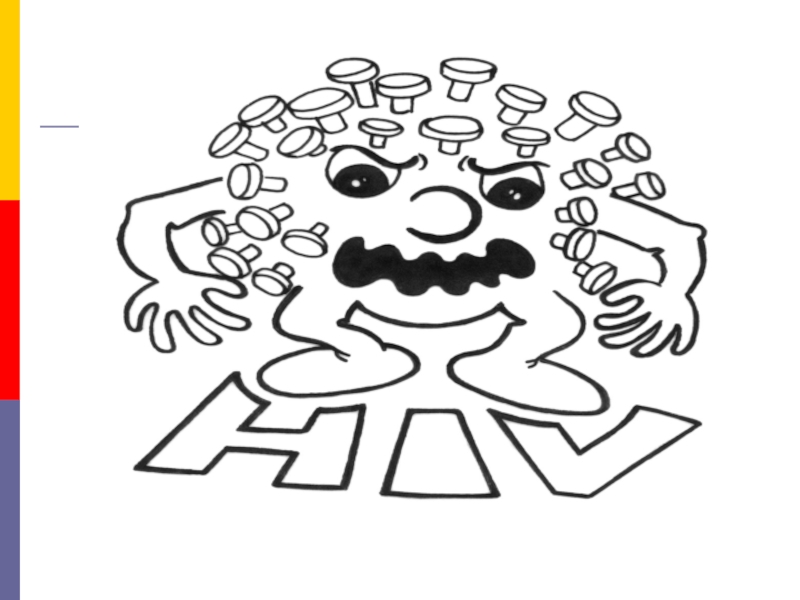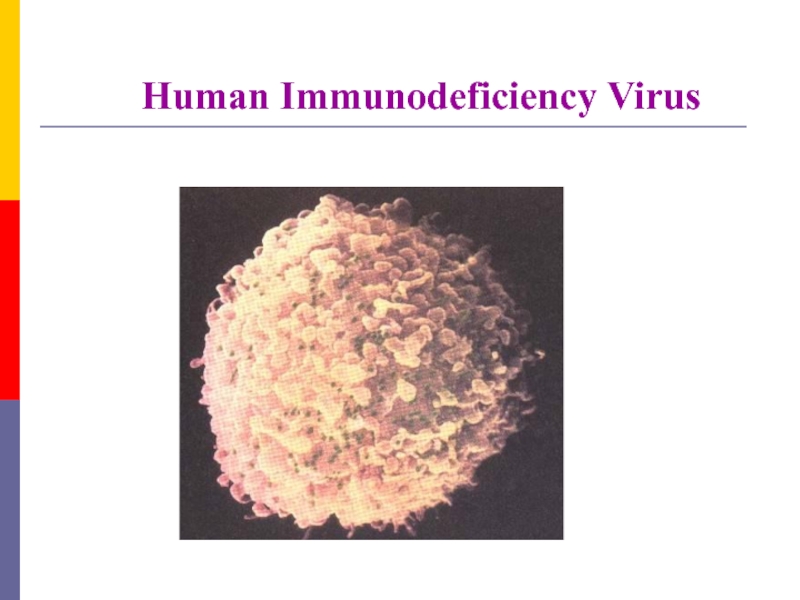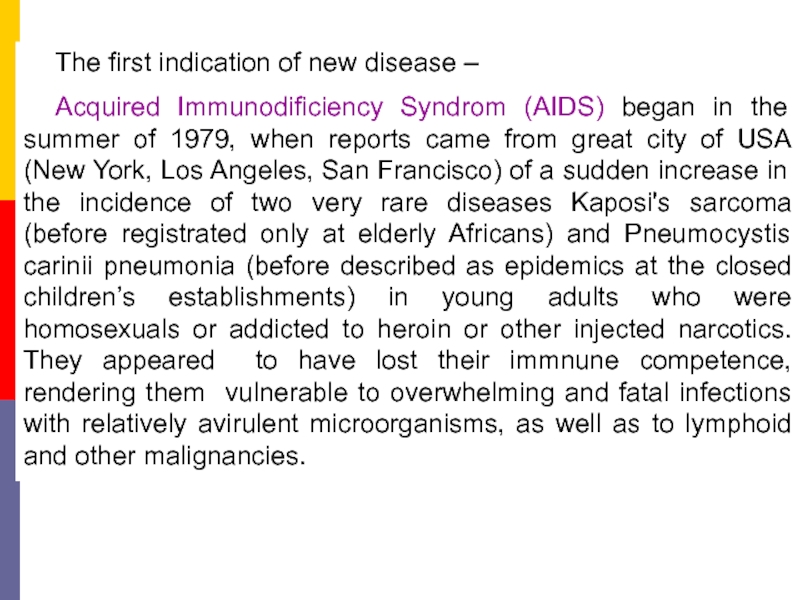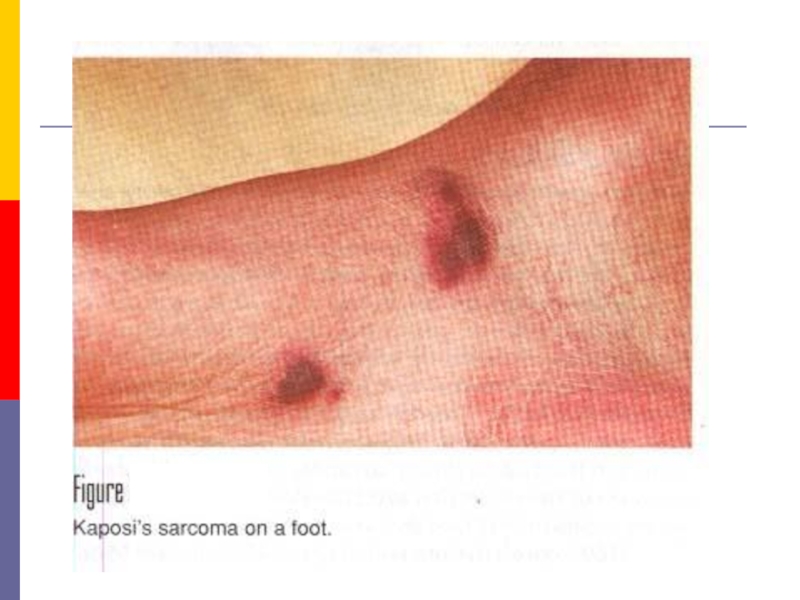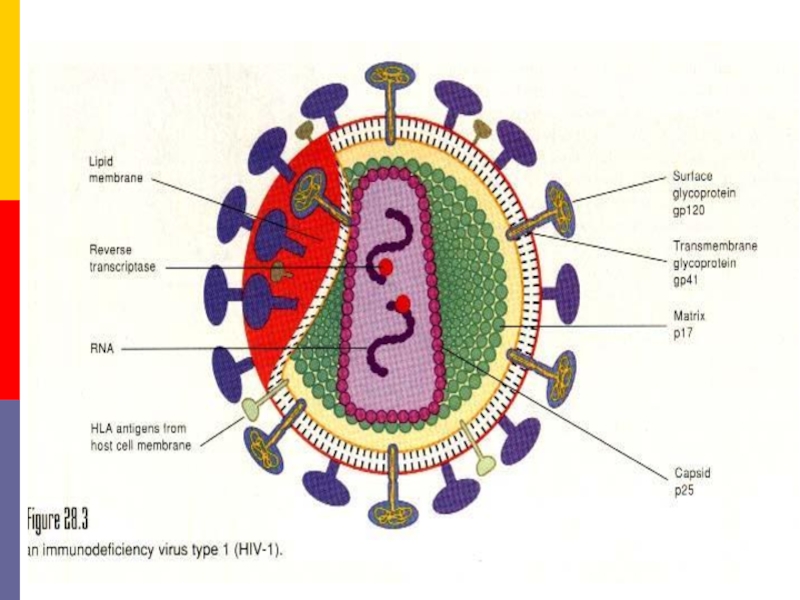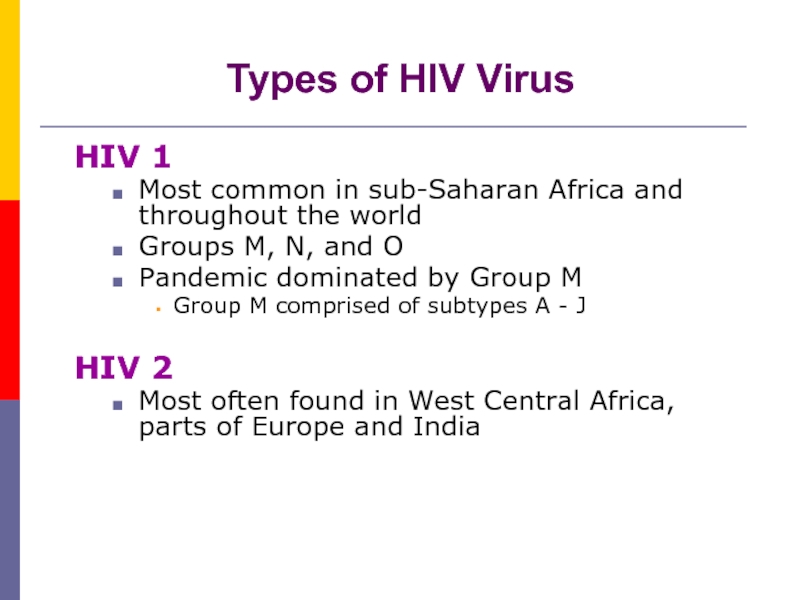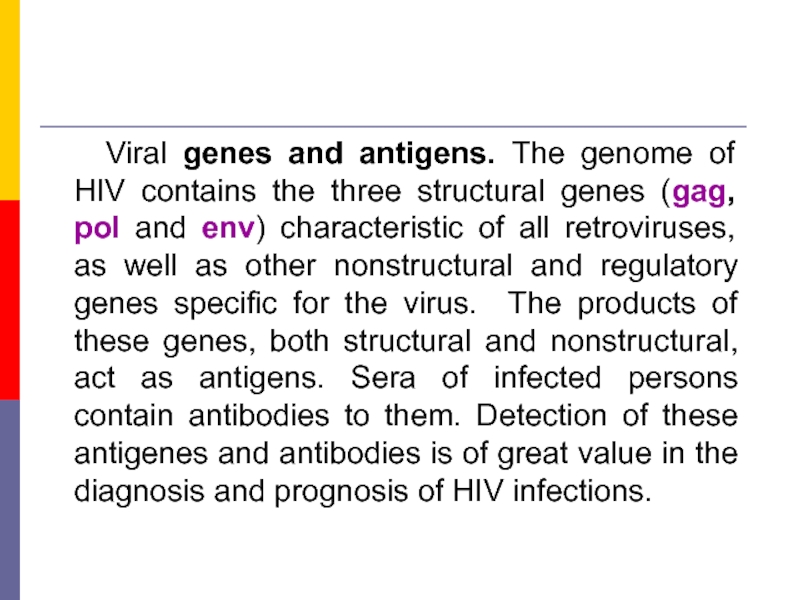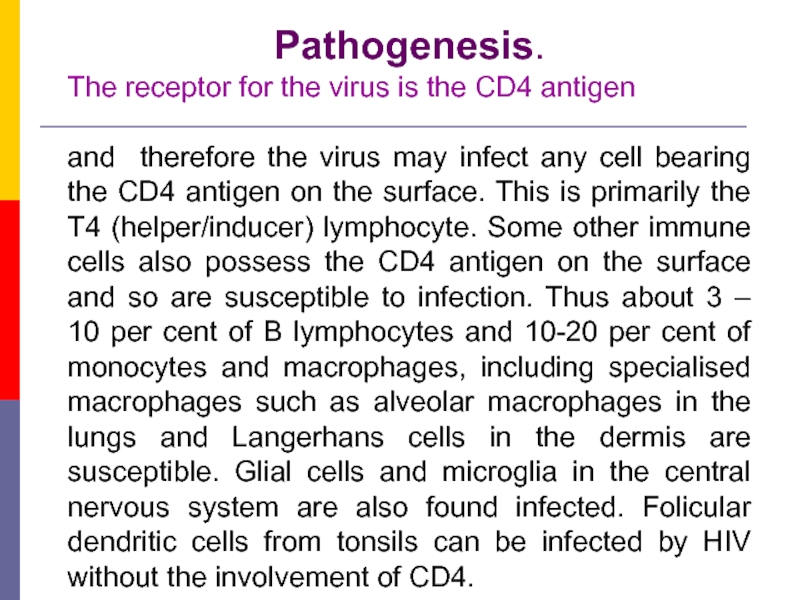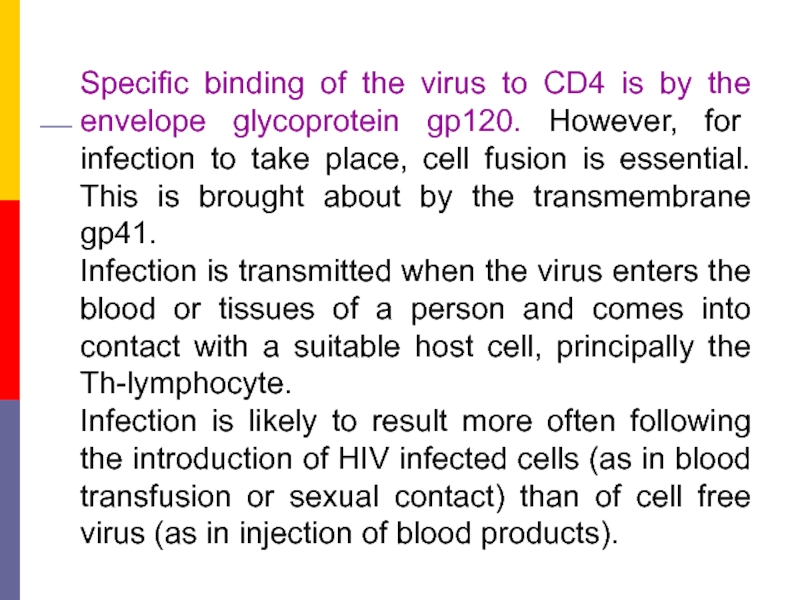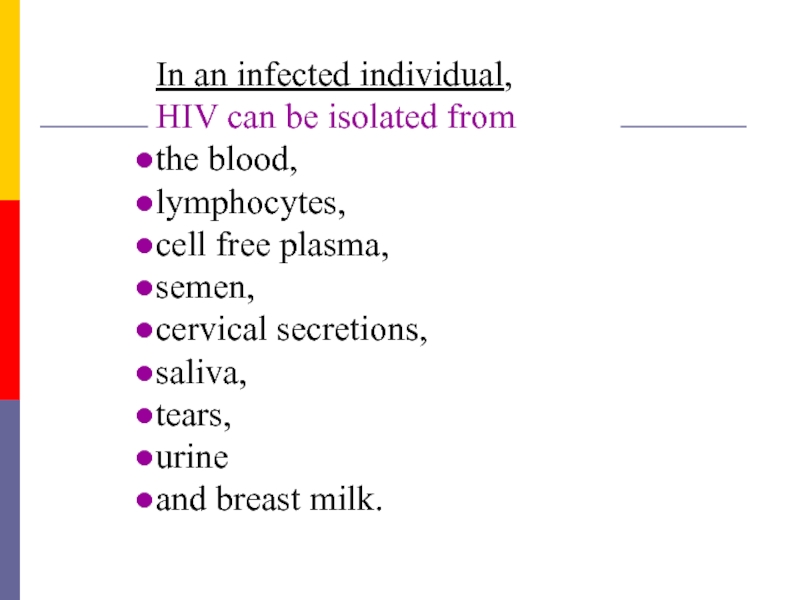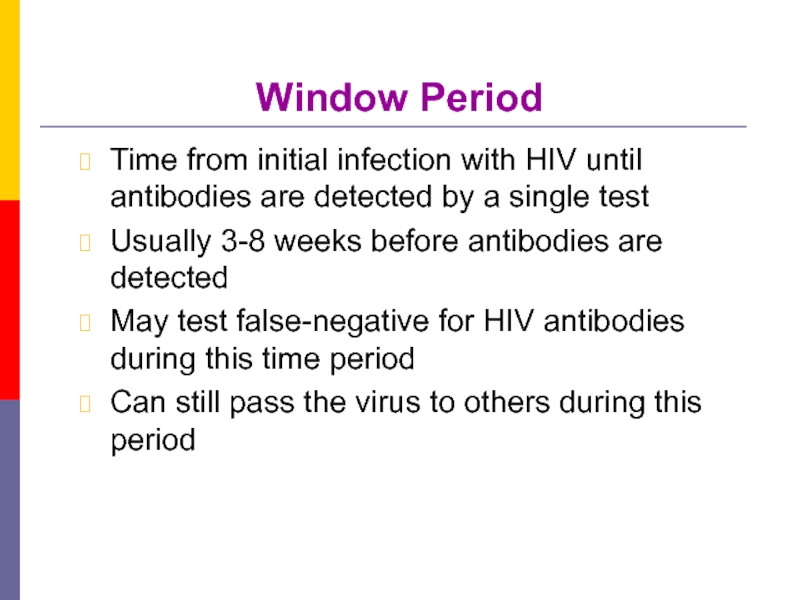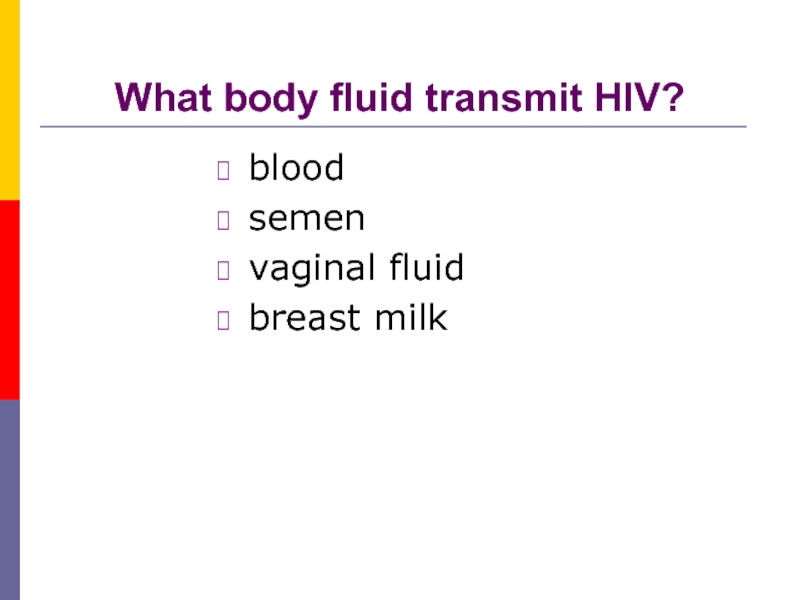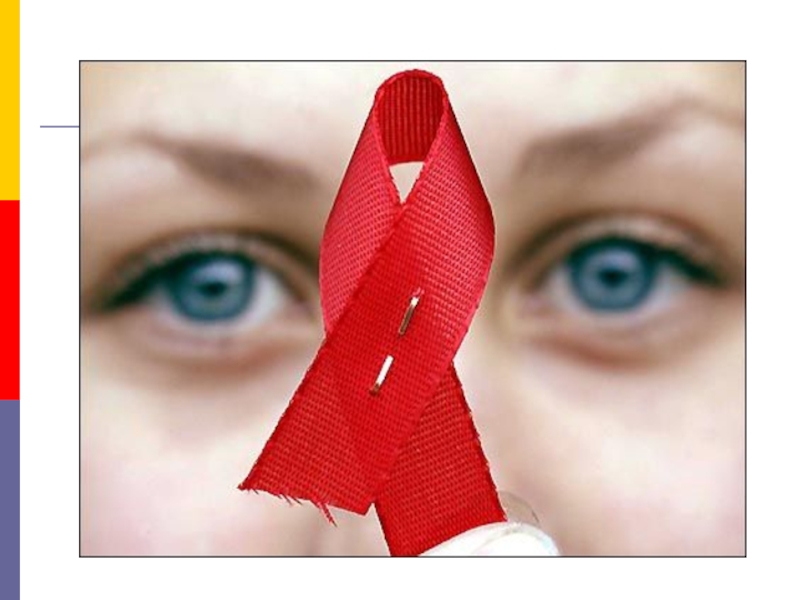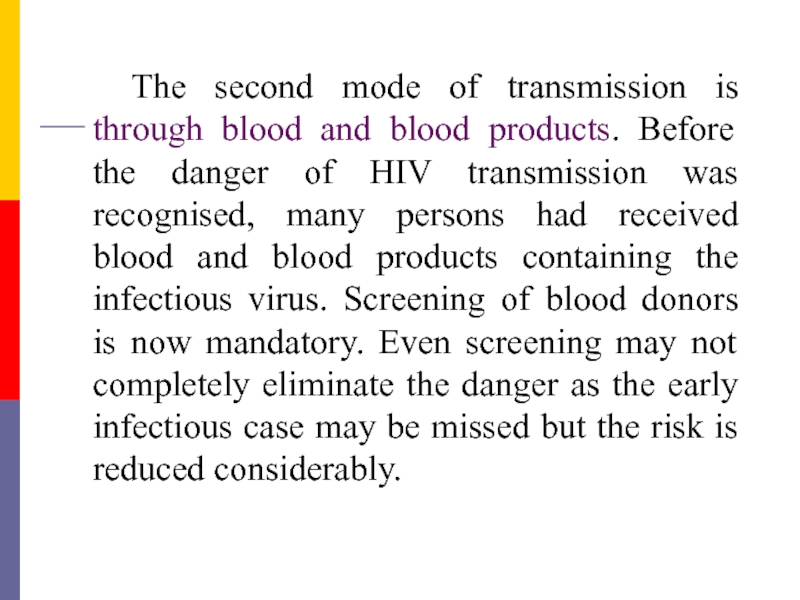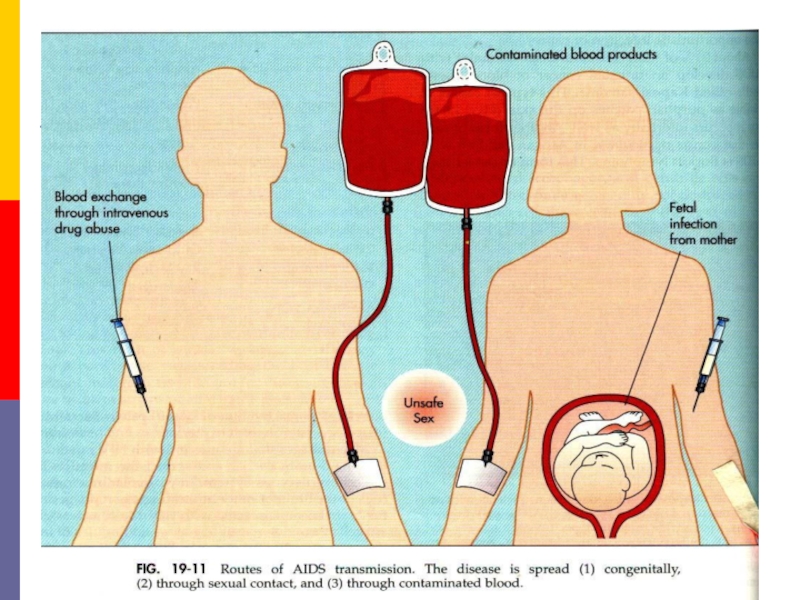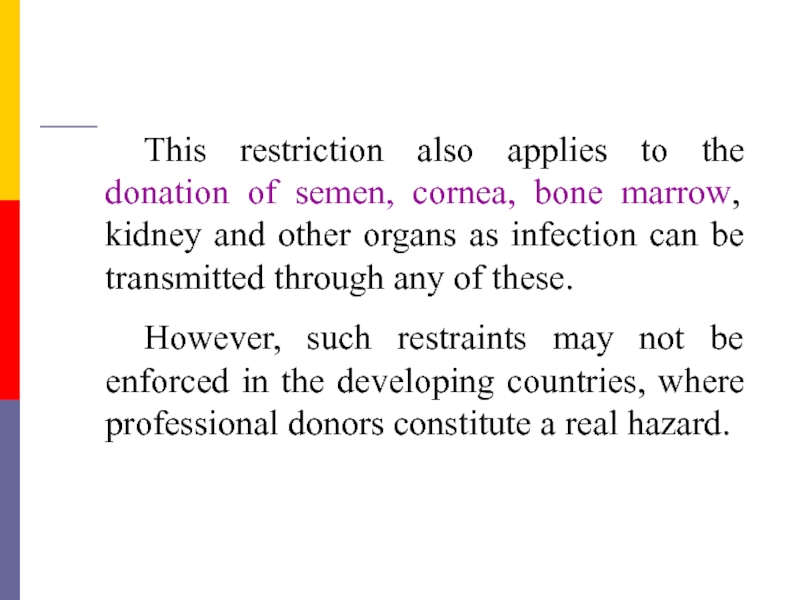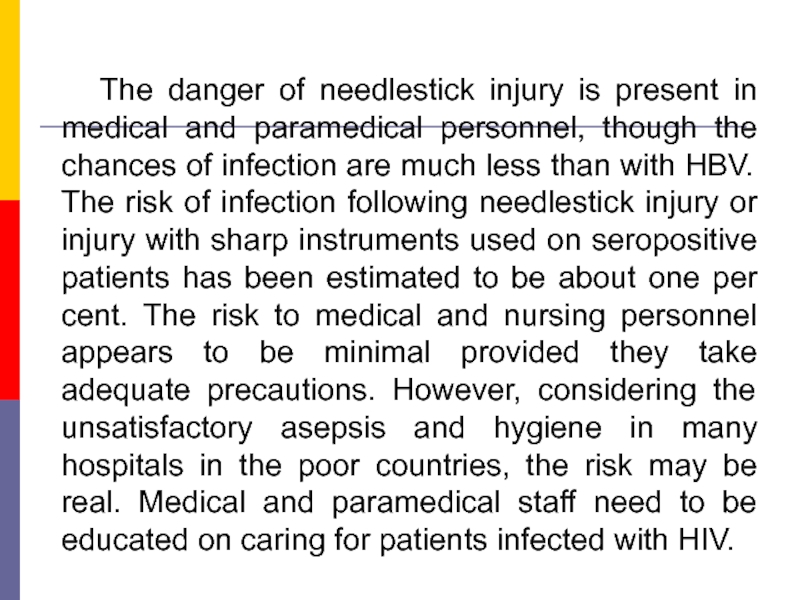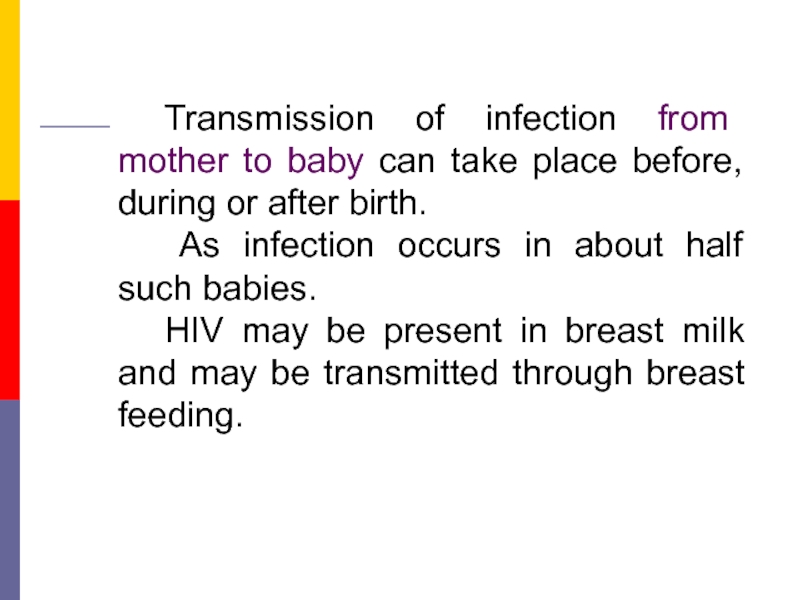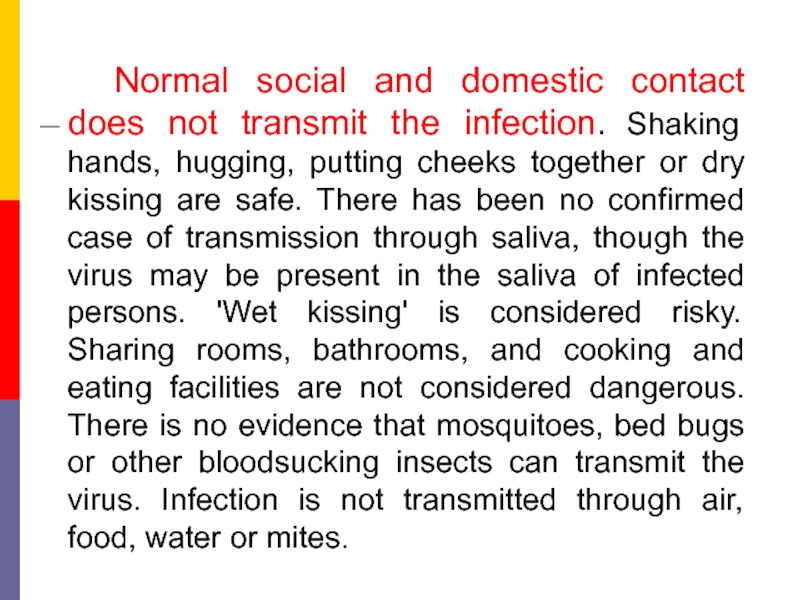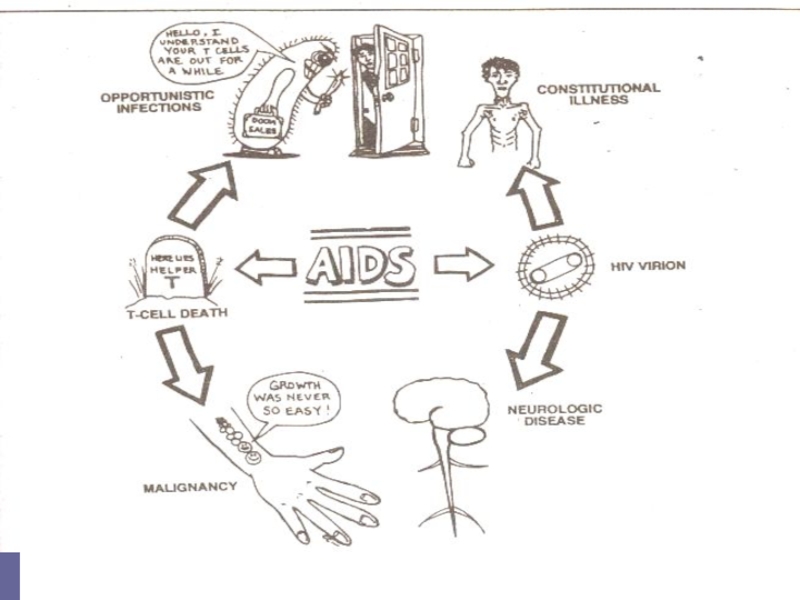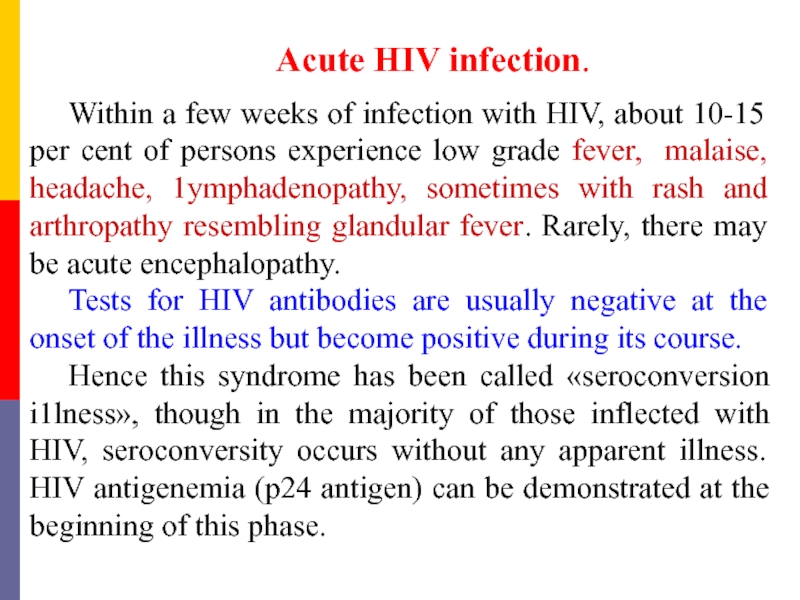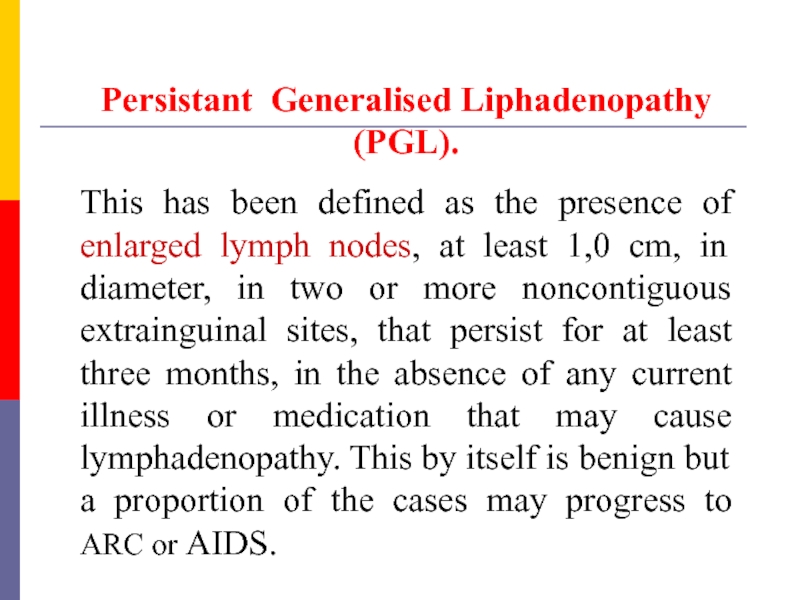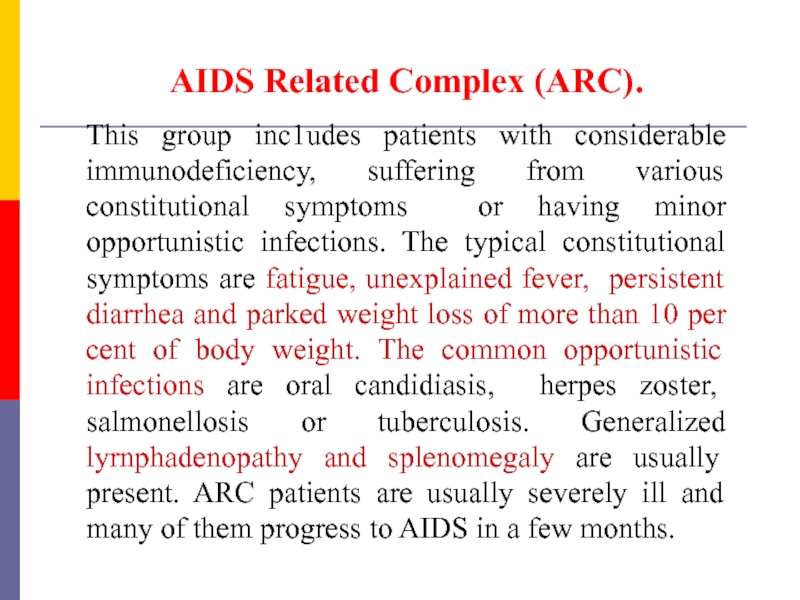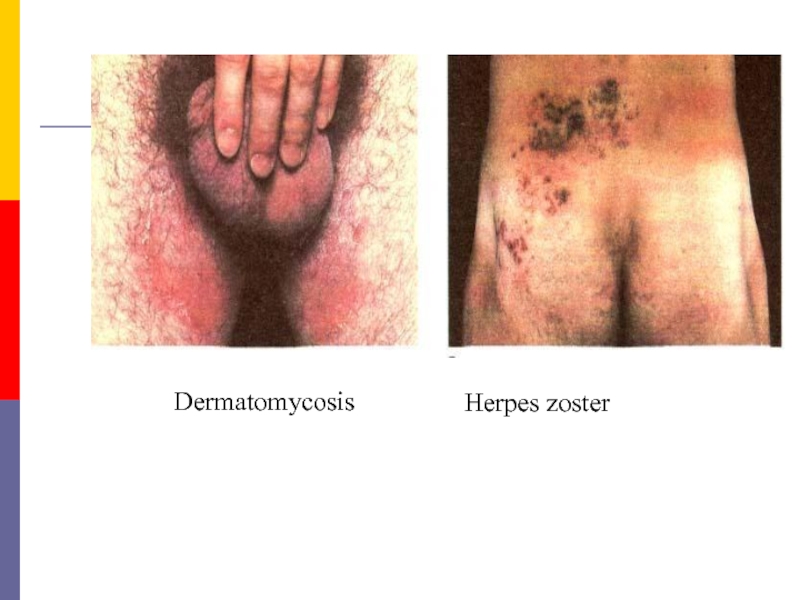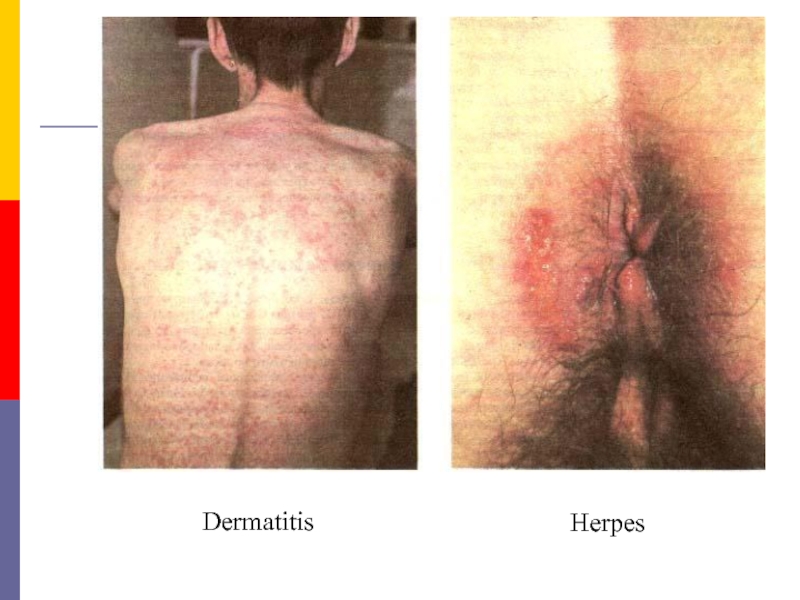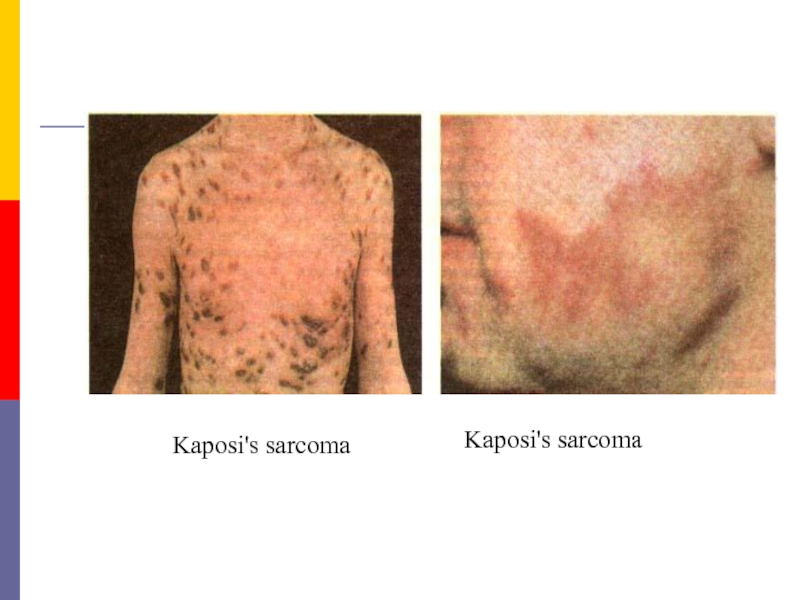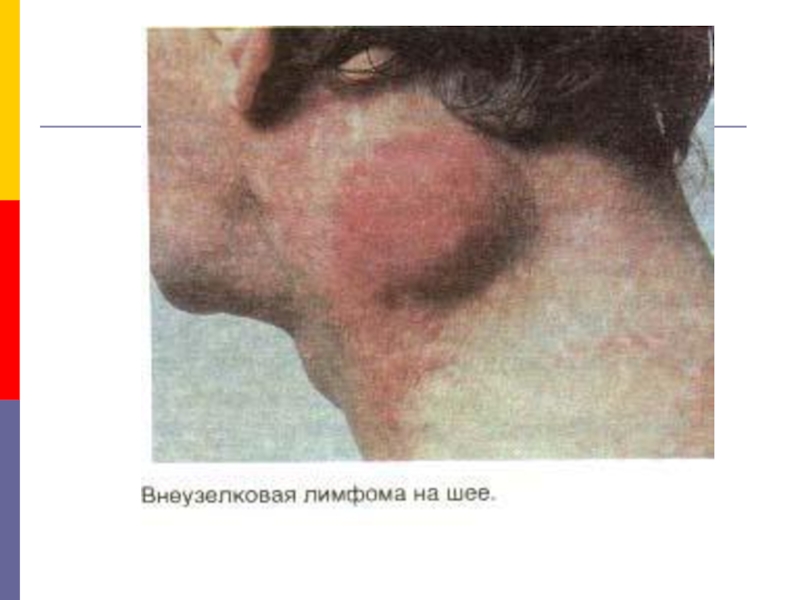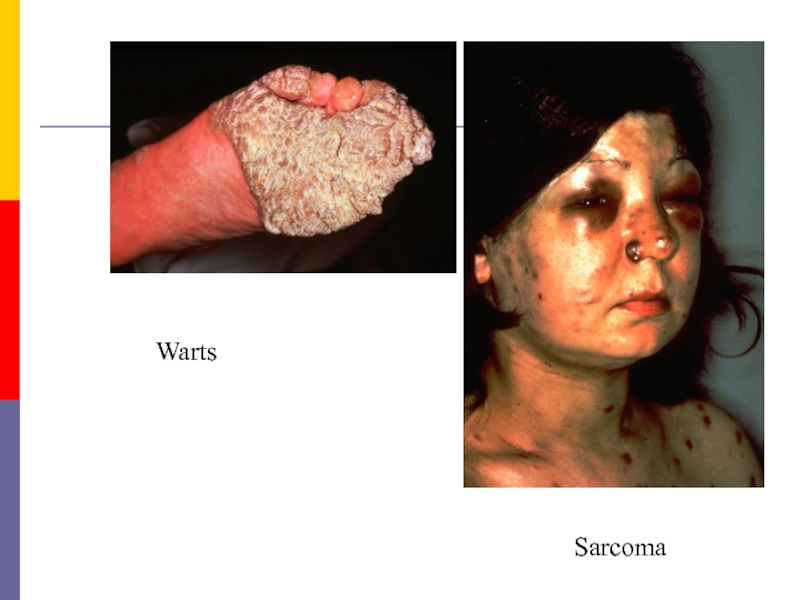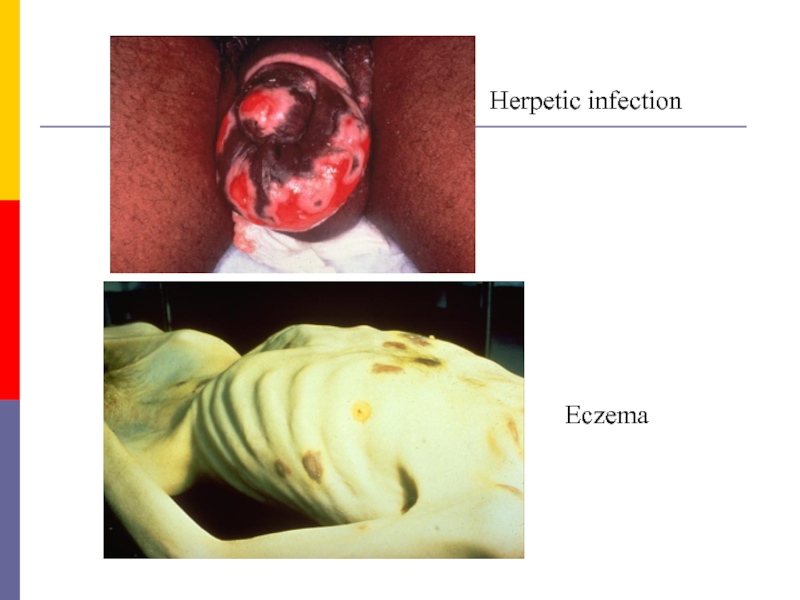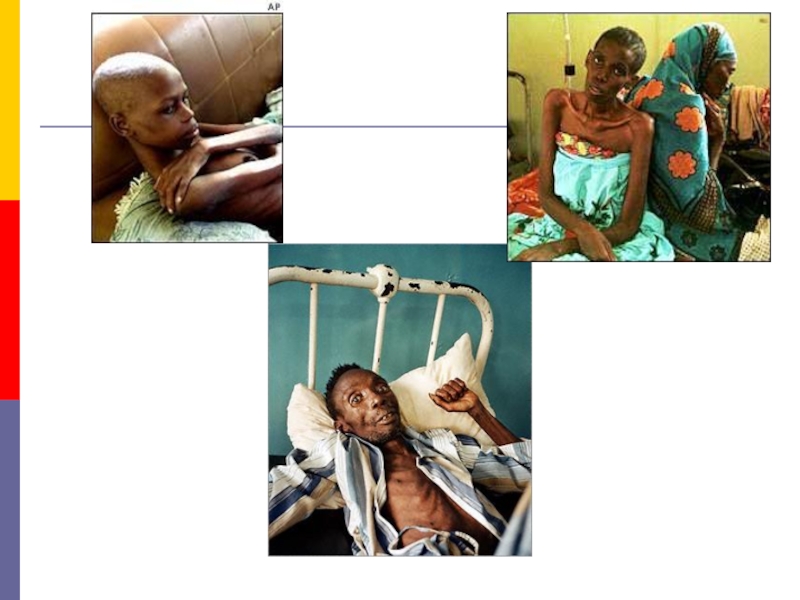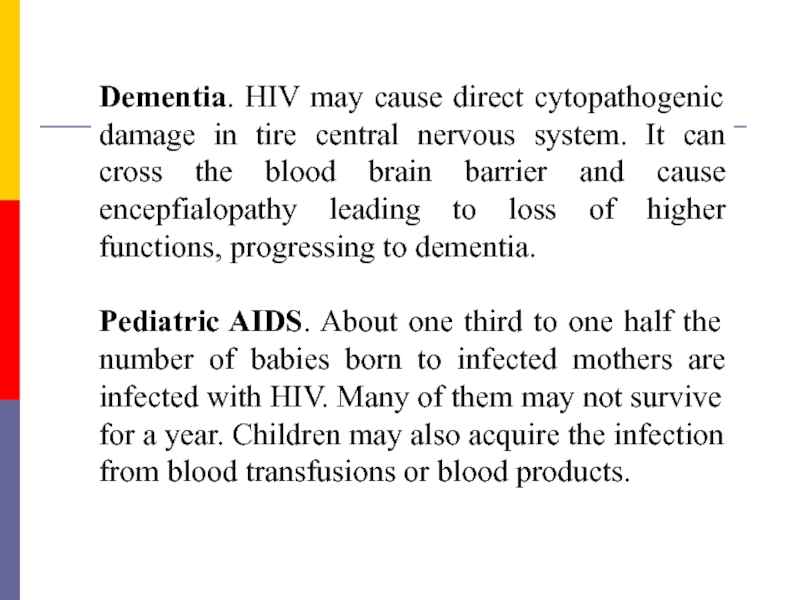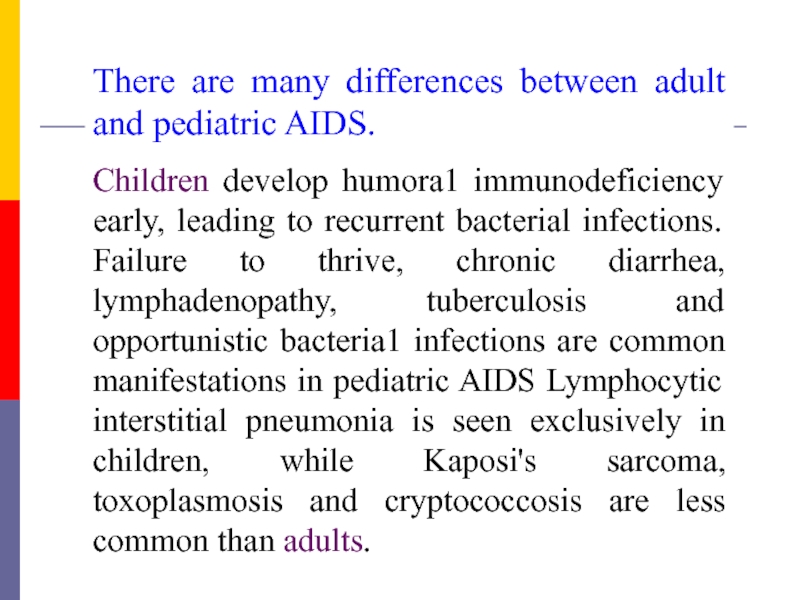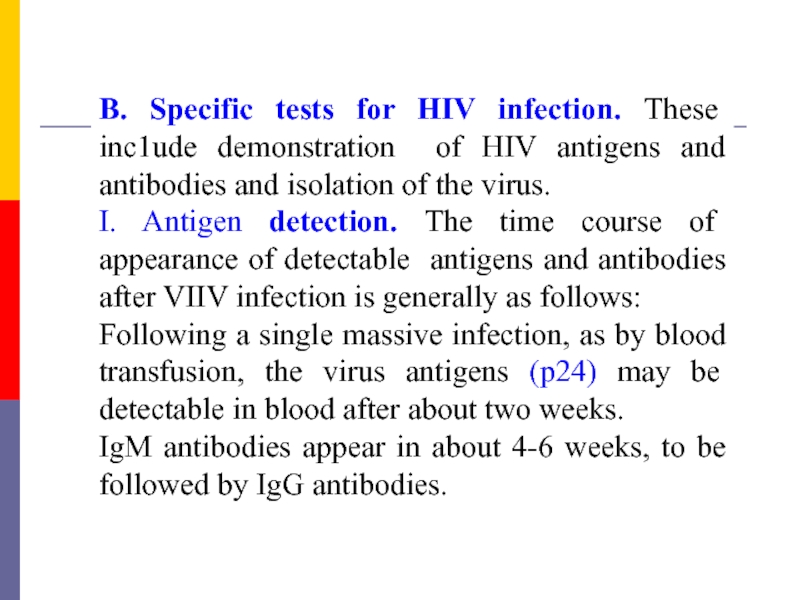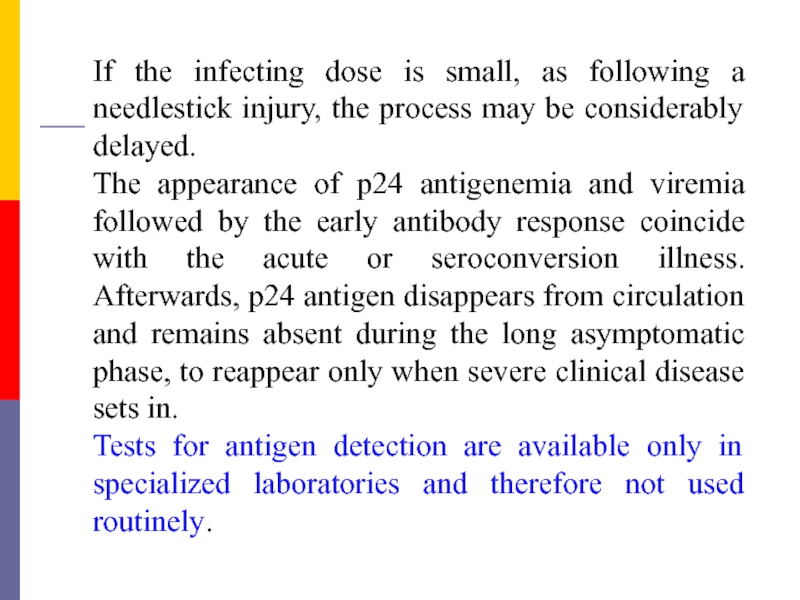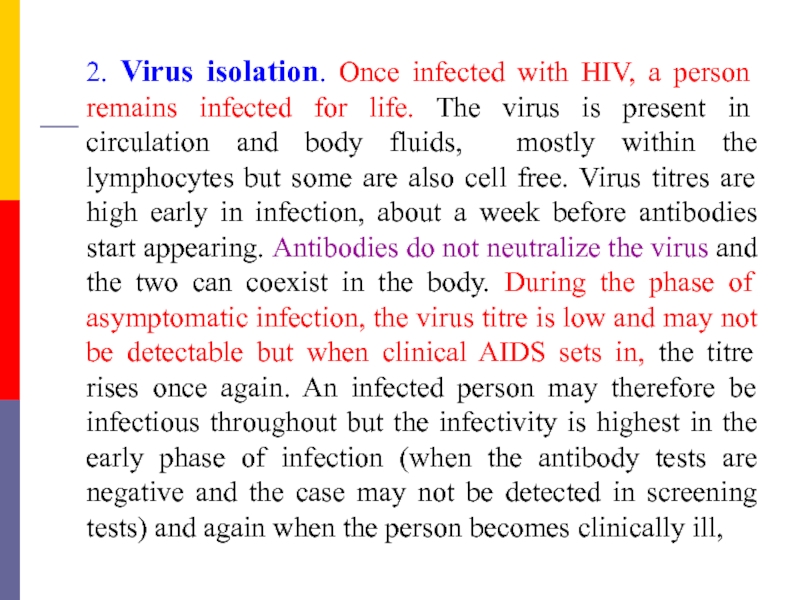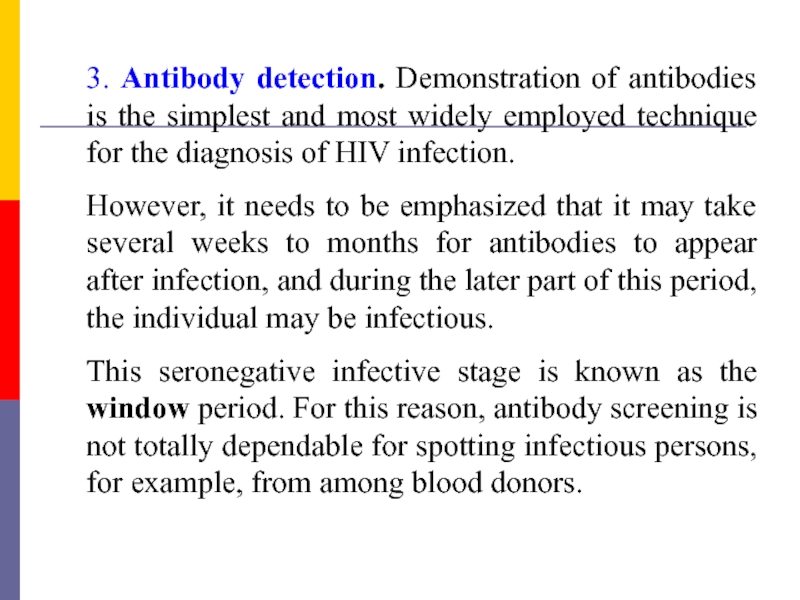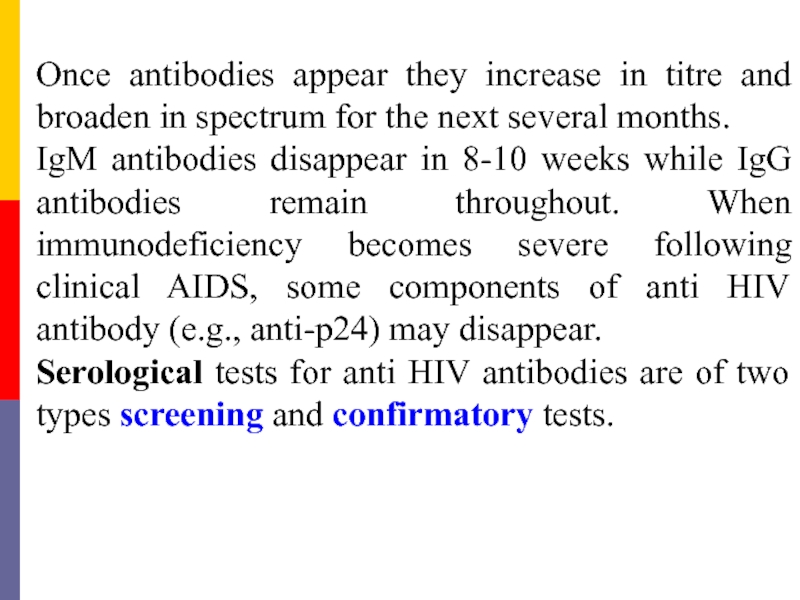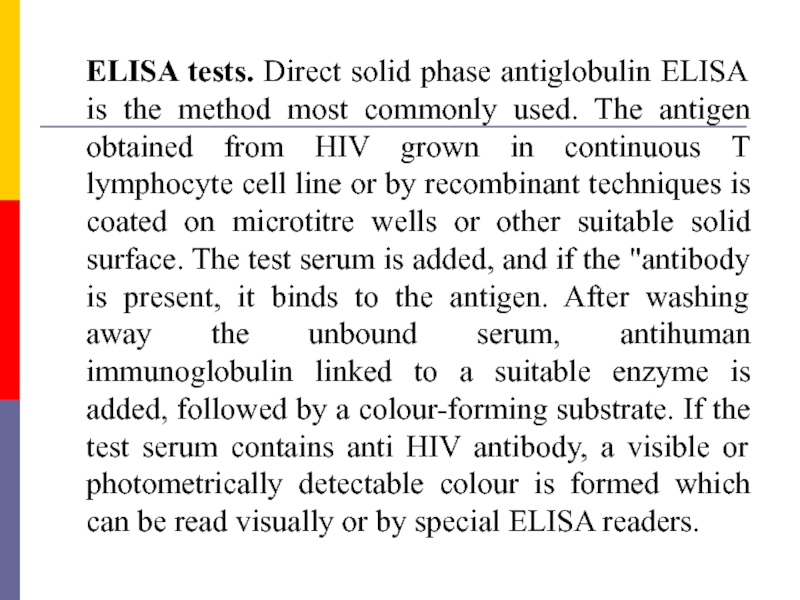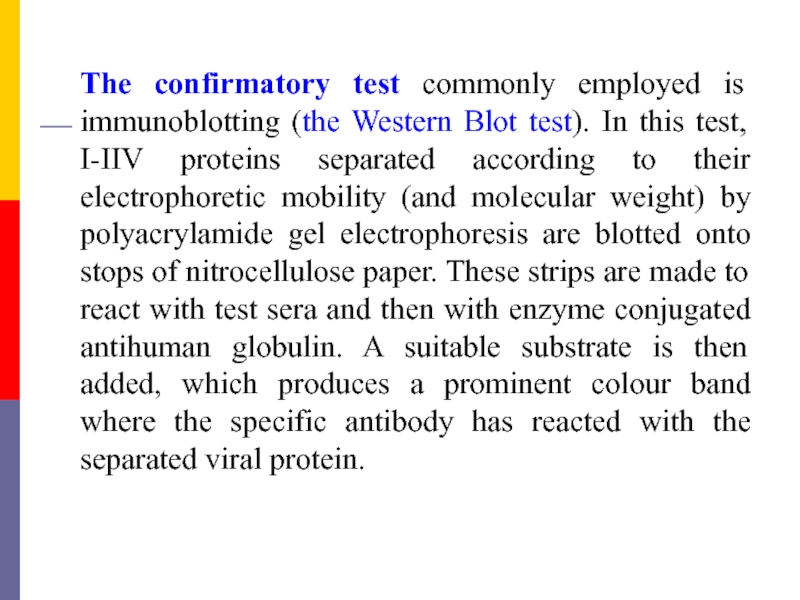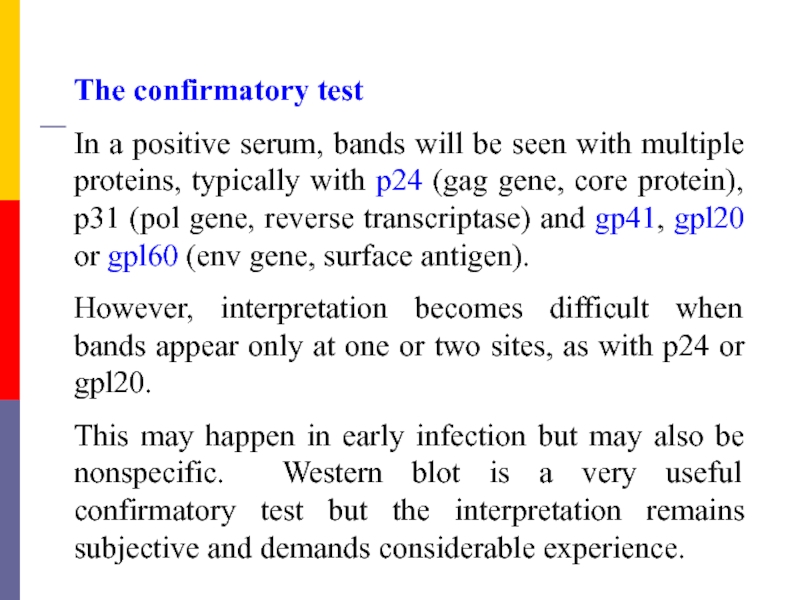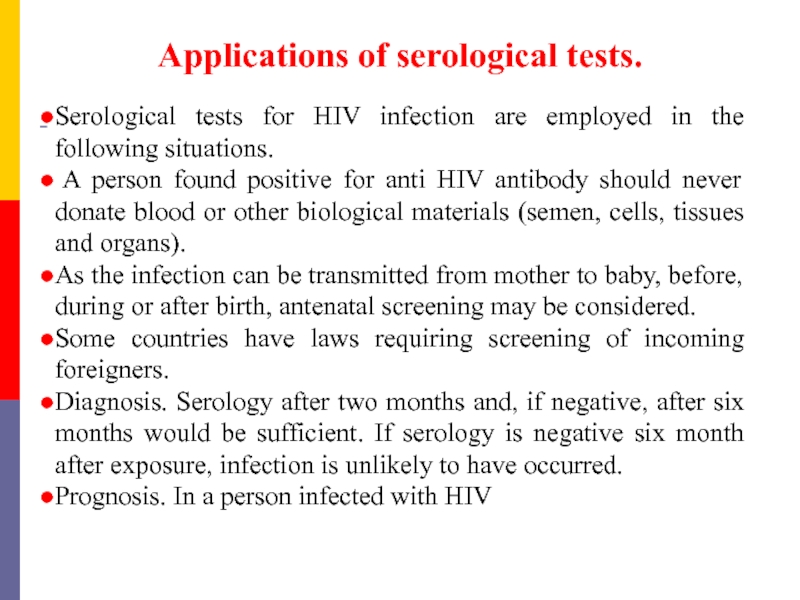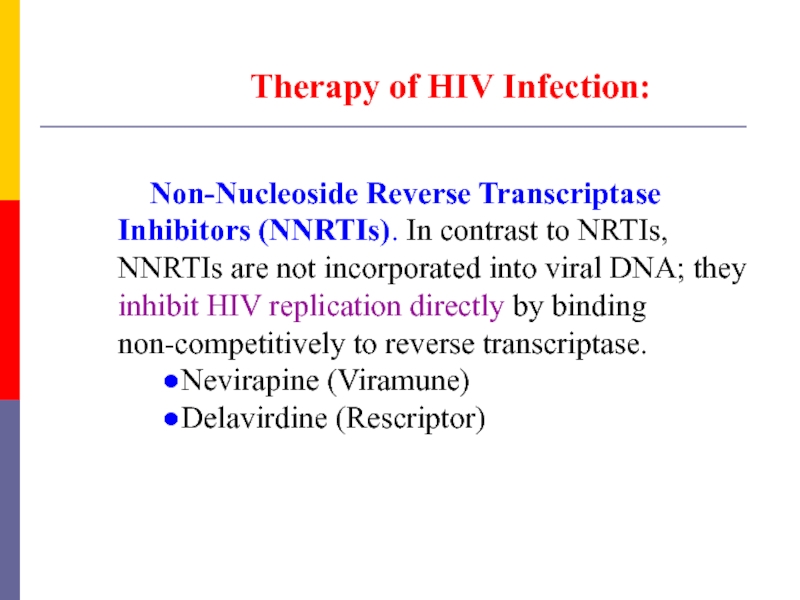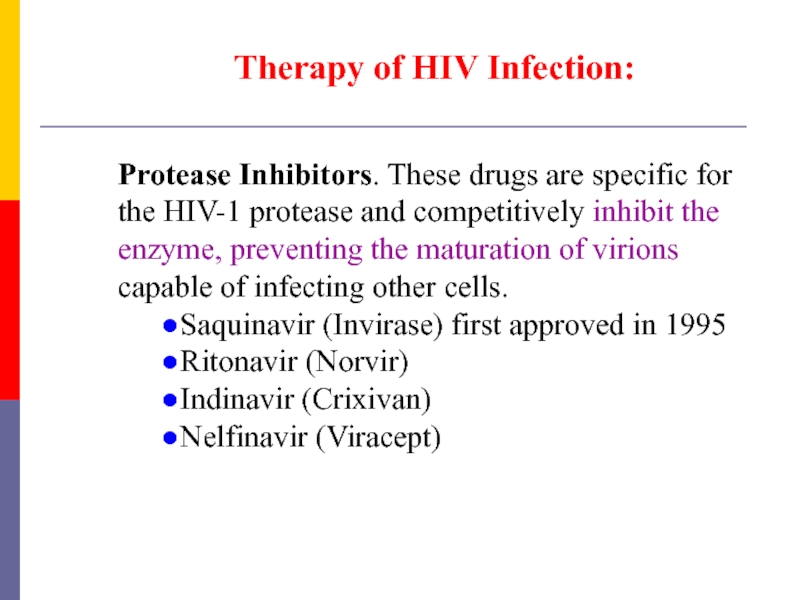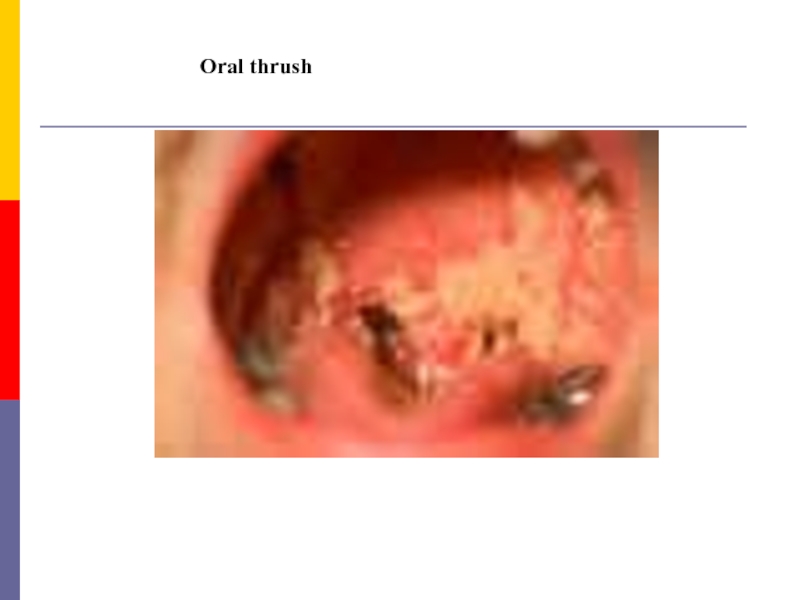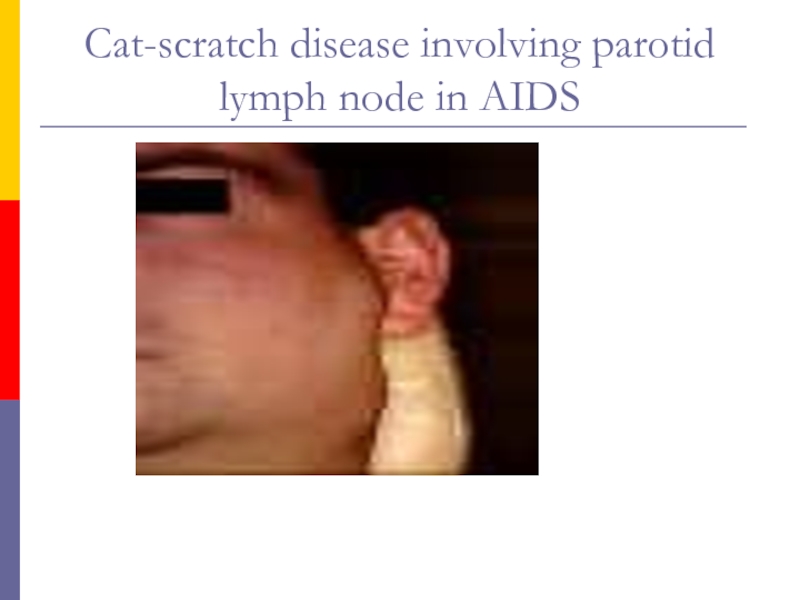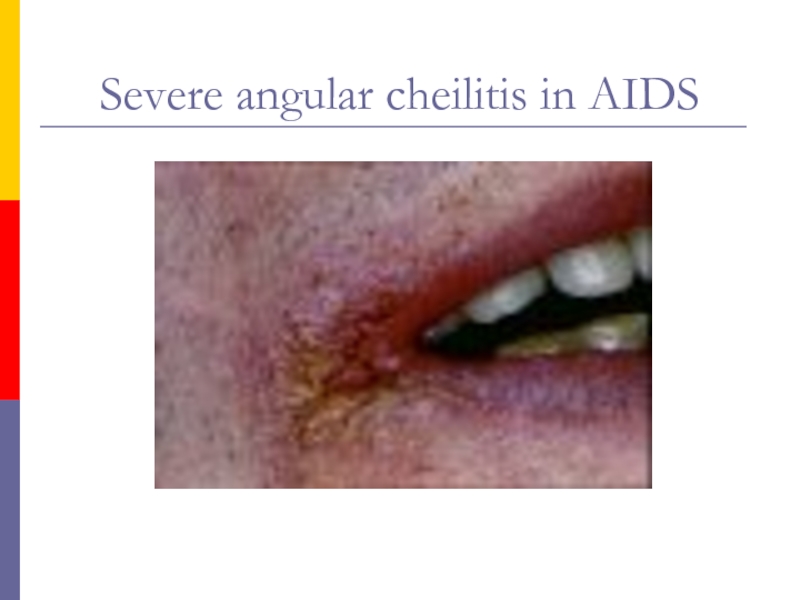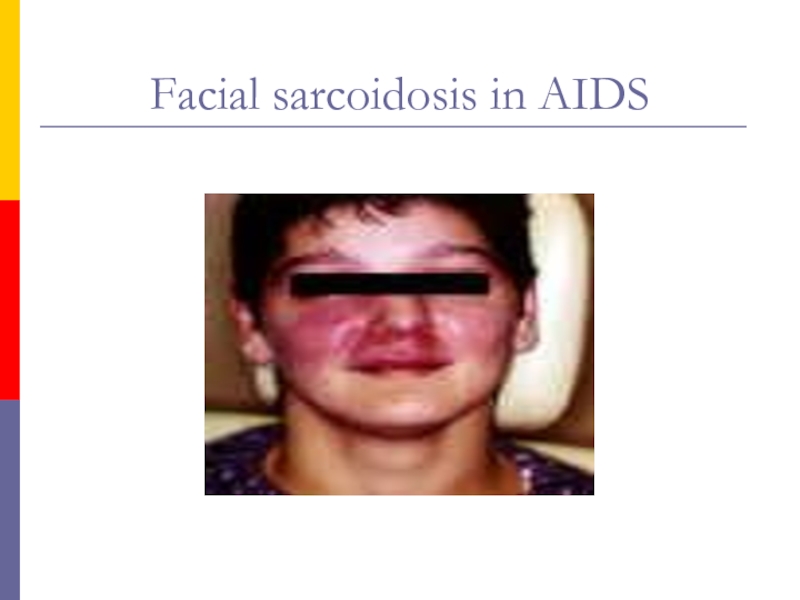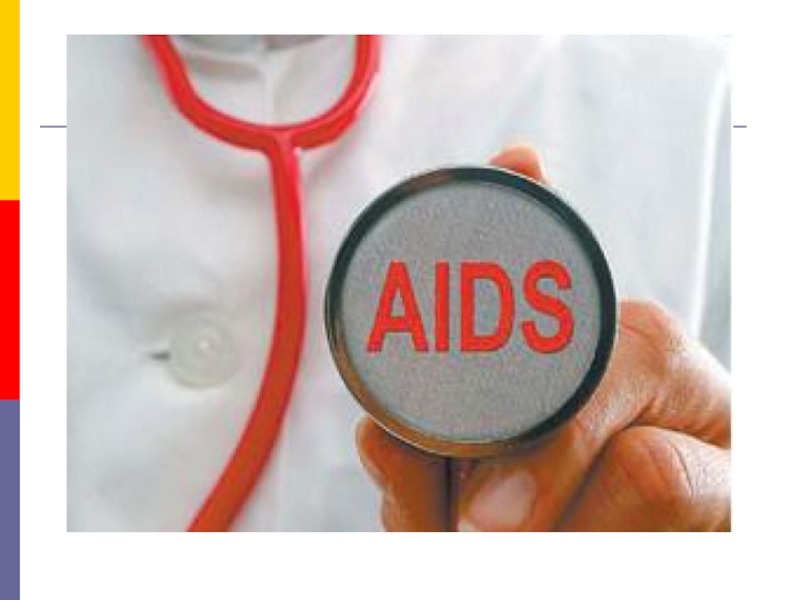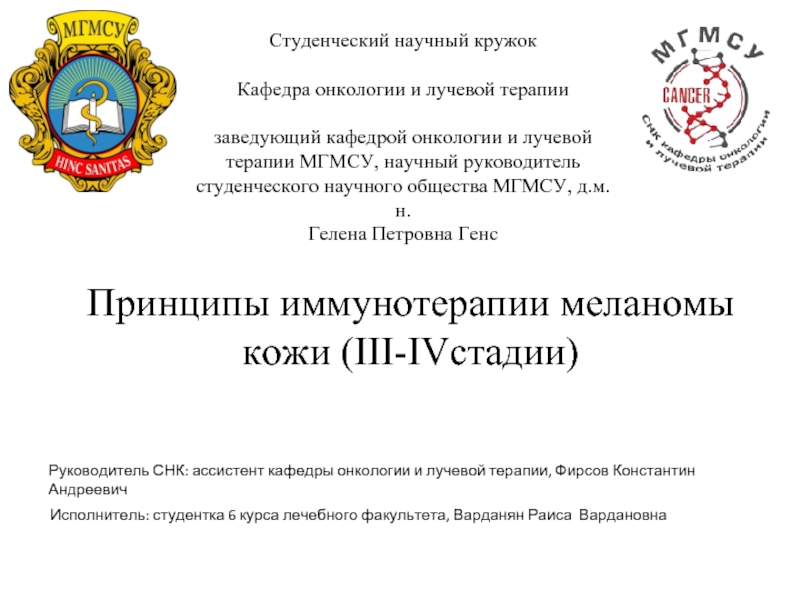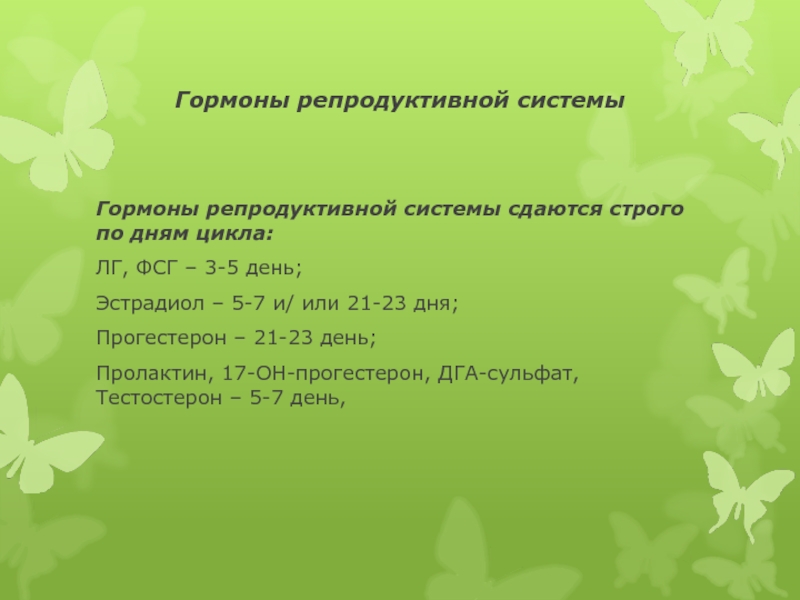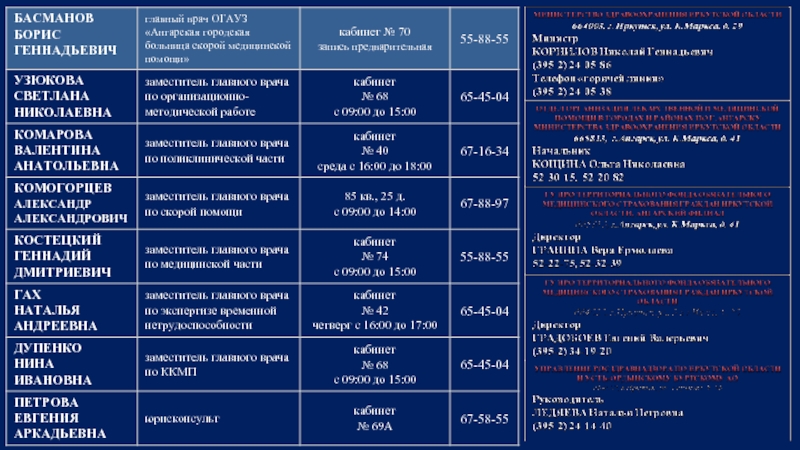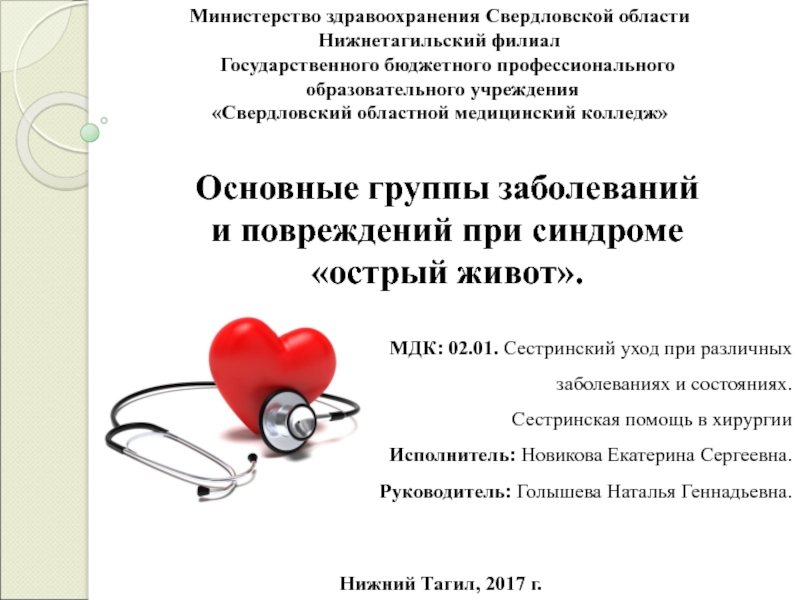- Главная
- Разное
- Дизайн
- Бизнес и предпринимательство
- Аналитика
- Образование
- Развлечения
- Красота и здоровье
- Финансы
- Государство
- Путешествия
- Спорт
- Недвижимость
- Армия
- Графика
- Культурология
- Еда и кулинария
- Лингвистика
- Английский язык
- Астрономия
- Алгебра
- Биология
- География
- Детские презентации
- Информатика
- История
- Литература
- Маркетинг
- Математика
- Медицина
- Менеджмент
- Музыка
- МХК
- Немецкий язык
- ОБЖ
- Обществознание
- Окружающий мир
- Педагогика
- Русский язык
- Технология
- Физика
- Философия
- Химия
- Шаблоны, картинки для презентаций
- Экология
- Экономика
- Юриспруденция
Human immunodeficiency virus презентация
Содержание
- 2. Plan of lecture Overview Etiology Epidemiology Pathogenesis Manifestations Diagnosis Therapy and Prevention
- 3. Human Immunodeficiency Virus
- 4. The first indication of new disease –
- 6. Pneumocystis carinii
- 7. Statistics The latest statistics on the world
- 8. HIV, the etiologjcal agent of AIDS, belongs
- 10. Types of HIV Virus HIV 1 Most
- 11. Viral genes and antigens. The genome of
- 12. Pathogenesis. The receptor for the virus
- 13. Specific binding of the virus to CD4
- 14. In an infected individual, HIV can
- 15. The primary pathogenic mechanism in HIV infection
- 16. Window Period Time from initial infection with
- 17. Disease Progression Severity of illness is determined
- 18. What body fluid transmit HIV? blood semen vaginal fluid breast milk
- 19. AIDS is primarily a sexually transmitted infection.
- 21. The second mode of transmission is through
- 23. This restriction also applies to the donation
- 24. Contaminated needles can transmit the infection. This
- 26. The danger of needlestick injury is present
- 27. Transmission of infection from mother to baby
- 28. Normal social and domestic contact does not
- 30. ACQUIRED DEFICIENCY SYNDROME (AIDS) Clinical features
- 32. Asymptomatic
- 33. Persistant Generalised Liphadenopathy (PGL). This has
- 34. AIDS Related Complex (ARC). This group
- 35. AIDS. This is the end stage
- 36. Dermatomycosis Herpes zoster
- 37. Dermatitis Herpes
- 38. Kaposi's sarcoma Kaposi's sarcoma
- 40. Warts Sarcoma
- 41. Herpetic infection Еczema
- 43. Dementia. HIV may cause direct cytopathogenic damage
- 44. There are many differences between adult and
- 45. Laboratory diagnosis Laboratory procedures for the
- 46. B. Specific tests for HIV infection. These
- 47. If the infecting dose is small,
- 48. 2. Virus isolation. Once infected with HIV,
- 49. 3. Antibody detection. Demonstration of antibodies is
- 50. Once antibodies appear they increase in titre
- 51. Screening tests possess high sensitivity, have a
- 52. ELISA tests. Direct solid phase antiglobulin ELISA
- 53. The confirmatory test commonly employed is immunoblotting
- 54. The confirmatory test In a positive
- 55. Applications of serological tests. Serological
- 56. Therapy of HIV Infection: Several distinct
- 57. Therapy of HIV Infection: Non-Nucleoside
- 58. Therapy of HIV Infection: Protease
- 59. Oral thrush
- 60. Hairy leukoplakia of tongue in AIDS
- 61. Candida and herpes simplex in AIDS
- 62. Cat-scratch disease involving parotid lymph node in AIDS
- 63. Severe angular cheilitis in AIDS
- 64. Orofacial granulomatosis with cobble stone mucosa in AIDS
- 65. Facial sarcoidosis in AIDS
Слайд 2Plan of lecture
Overview
Etiology
Epidemiology
Pathogenesis
Manifestations
Diagnosis
Therapy and Prevention
Слайд 4The first indication of new disease –
Acquired Immunodificiency Syndrom (AIDS)
began in the summer of 1979, when reports came from great city of USA (New York, Los Angeles, San Francisco) of a sudden increase in the incidence of two very rare diseases Kaposi's sarcoma (before registrated only at elderly Africans) and Pneumocystis carinii pneumonia (before described as epidemics at the closed children’s establishments) in young adults who were homosexuals or addicted to heroin or other injected narcotics. They appeared to have lost their immnune competence, rendering them vulnerable to overwhelming and fatal infections with relatively avirulent microorganisms, as well as to lymphoid and other malignancies.
Слайд 7Statistics
The latest statistics on the world epidemic(UNAIDS/WHO) – 01.01.2012
People living with
HIV/AIDS 33 million
Adults living with HIV/AIDS 30,8 million
Women living with HIV/AIDS 17,3million
Children living with HIV/AIDS 2,3 million
New infections with HIV/AIDS 4,1 million
AIDS deaths 2,8 million
Adults living with HIV/AIDS 30,8 million
Women living with HIV/AIDS 17,3million
Children living with HIV/AIDS 2,3 million
New infections with HIV/AIDS 4,1 million
AIDS deaths 2,8 million
Every day in the world infect with HIV 14.000 people, about 6.000 – young men and women 15 - 24 years old.
Слайд 8HIV, the etiologjcal agent of AIDS, belongs to the lentivirus subgroup
of the family Retroviridae.
Structure. HIV is a spherical enveloped virus, about 90-120 nm in size. The nucleocapsid has an outer icosaedral shell and an inner coneshaped core, enclosing the ribonucleoproteins. The genome is diploid, composed of two identical single stranded, positive sense RNA copies.
In association with viral RNA is the reverse transcriptase enzyme, which is a characteristic features of retroviruses. When the virus infects a cell, the viral RNA is transcribed by the enzyme, first into single stranded DNA and then to double stranded DNA (provirus) which is integrated into the host cell chromosome.
Structure. HIV is a spherical enveloped virus, about 90-120 nm in size. The nucleocapsid has an outer icosaedral shell and an inner coneshaped core, enclosing the ribonucleoproteins. The genome is diploid, composed of two identical single stranded, positive sense RNA copies.
In association with viral RNA is the reverse transcriptase enzyme, which is a characteristic features of retroviruses. When the virus infects a cell, the viral RNA is transcribed by the enzyme, first into single stranded DNA and then to double stranded DNA (provirus) which is integrated into the host cell chromosome.
Слайд 10Types of HIV Virus
HIV 1
Most common in sub-Saharan Africa and throughout
the world
Groups M, N, and O
Pandemic dominated by Group M
Group M comprised of subtypes A - J
HIV 2
Most often found in West Central Africa, parts of Europe and India
Groups M, N, and O
Pandemic dominated by Group M
Group M comprised of subtypes A - J
HIV 2
Most often found in West Central Africa, parts of Europe and India
Слайд 11Viral genes and antigens. The genome of HIV contains the three
structural genes (gag, pol and env) characteristic of all retroviruses, as well as other nonstructural and regulatory genes specific for the virus. The products of these genes, both structural and nonstructural, act as antigens. Sera of infected persons contain antibodies to them. Detection of these antigenes and antibodies is of great value in the diagnosis and prognosis of HIV infections.
Слайд 12Pathogenesis.
The receptor for the virus is the CD4 antigen
and
therefore the virus may infect any cell bearing the CD4 antigen on the surface. This is primarily the T4 (helper/inducer) lymphocyte. Some other immune cells also possess the CD4 antigen on the surface and so are susceptible to infection. Thus about 3 – 10 per cent of B lymphocytes and 10-20 per cent of monocytes and macrophages, including specialised macrophages such as alveolar macrophages in the lungs and Langerhans cells in the dermis are susceptible. Glial cells and microglia in the central nervous system are also found infected. Folicular dendritic cells from tonsils can be infected by HIV without the involvement of CD4.
Слайд 13Specific binding of the virus to CD4 is by the envelope
glycoprotein gp120. However, for infection to take place, cell fusion is essential. This is brought about by the transmembrane gp41.
Infection is transmitted when the virus enters the blood or tissues of a person and comes into contact with a suitable host cell, principally the Th-lymphocyte.
Infection is likely to result more often following the introduction of HIV infected cells (as in blood transfusion or sexual contact) than of cell free virus (as in injection of blood products).
Infection is transmitted when the virus enters the blood or tissues of a person and comes into contact with a suitable host cell, principally the Th-lymphocyte.
Infection is likely to result more often following the introduction of HIV infected cells (as in blood transfusion or sexual contact) than of cell free virus (as in injection of blood products).
Слайд 14In an infected individual,
HIV can be isolated from
the blood,
lymphocytes,
cell free plasma,
semen,
cervical secretions,
saliva,
tears,
urine
and breast milk.
Слайд 15The primary pathogenic mechanism in HIV infection is the damage caused
to the T4 lymphocyte. The T4 cells decrease in numbers and the T4:T8 (helper : killer) cell ratio is reversed.
Viral infection can suppress the function of infected cells without causing structural damage. Infected T4 cells do not appear to release normal amounts of interleukin-2, gamma interferon and other lymphokines. This has a marked dampening effect on cell mediated immune response.
Viral infection can suppress the function of infected cells without causing structural damage. Infected T4 cells do not appear to release normal amounts of interleukin-2, gamma interferon and other lymphokines. This has a marked dampening effect on cell mediated immune response.
Слайд 16Window Period
Time from initial infection with HIV until antibodies are detected
by a single test
Usually 3-8 weeks before antibodies are detected
May test false-negative for HIV antibodies during this time period
Can still pass the virus to others during this period
Usually 3-8 weeks before antibodies are detected
May test false-negative for HIV antibodies during this time period
Can still pass the virus to others during this period
Слайд 17Disease Progression
Severity of illness is determined by amount of virus in
the body (increasing viral load) and the degree of immune suppression (decreasing CD4+ counts)
As the CD4 count declines, the immune function decreases.
As the CD4 count declines, the immune function decreases.
Слайд 19AIDS is primarily a sexually transmitted infection.
In the USA it
was transmitted predominantly among male homosexuals. The danger of infection is more for the passive partner because mucosal tears are very frequent during anal intercourse and virus laden lymphocytes in the semen can directly enter through these. In homosexual men, the relative risk of infection in the various sexual practices has been estimated in the descending order as ano-receptive, oro-receptive, ano-insertive and instertive.
Слайд 21The second mode of transmission is through blood and blood products.
Before the danger of HIV transmission was recognised, many persons had received blood and blood products containing the infectious virus. Screening of blood donors is now mandatory. Even screening may not completely eliminate the danger as the early infectious case may be missed but the risk is reduced considerably.
Слайд 23This restriction also applies to the donation of semen, cornea, bone
marrow, kidney and other organs as infection can be transmitted through any of these.
However, such restraints may not be enforced in the developing countries, where professional donors constitute a real hazard.
However, such restraints may not be enforced in the developing countries, where professional donors constitute a real hazard.
Слайд 24Contaminated needles can transmit the infection. This is particularly relevant in
drug addicts who share syringes and needles.
The use of unsterile syringes and needles by unqualified and unqualified health workers makes iatrogenic infection likely.
Even in large hospitals, sterilisation and asepsis are often unsatisfactory. The use of disposable syringes, needles and other equipment should be obligatory.
The use of unsterile syringes and needles by unqualified and unqualified health workers makes iatrogenic infection likely.
Even in large hospitals, sterilisation and asepsis are often unsatisfactory. The use of disposable syringes, needles and other equipment should be obligatory.
Слайд 26The danger of needlestick injury is present in medical and paramedical
personnel, though the chances of infection are much less than with HBV. The risk of infection following needlestick injury or injury with sharp instruments used on seropositive patients has been estimated to be about one per cent. The risk to medical and nursing personnel appears to be minimal provided they take adequate precautions. However, considering the unsatisfactory asepsis and hygiene in many hospitals in the poor countries, the risk may be real. Medical and paramedical staff need to be educated on caring for patients infected with HIV.
Слайд 27Transmission of infection from mother to baby can take place before,
during or after birth.
As infection occurs in about half such babies.
HIV may be present in breast milk and may be transmitted through breast feeding.
As infection occurs in about half such babies.
HIV may be present in breast milk and may be transmitted through breast feeding.
Слайд 28Normal social and domestic contact does not transmit the infection. Shaking
hands, hugging, putting cheeks together or dry kissing are safe. There has been no confirmed case of transmission through saliva, though the virus may be present in the saliva of infected persons. 'Wet kissing' is considered risky. Sharing rooms, bathrooms, and cooking and eating facilities are not considered dangerous. There is no evidence that mosquitoes, bed bugs or other bloodsucking insects can transmit the virus. Infection is not transmitted through air, food, water or mites.
Слайд 30ACQUIRED DEFICIENCY SYNDROME (AIDS)
Clinical features of HIV infection. AIDS is
only the last stage in the divide spectrum of clinical features in HIV infection.
The natural evolution of HIV infection can be considered in the following stages:
Acute HIV infection.
Asymptomatic infection.
Persistent Generalized Liphadenopathy (PGL).
AIDS Related Complex (ARC).
AIDS.
The natural evolution of HIV infection can be considered in the following stages:
Acute HIV infection.
Asymptomatic infection.
Persistent Generalized Liphadenopathy (PGL).
AIDS Related Complex (ARC).
AIDS.
Слайд 31
Acute HIV infection.
Within a few weeks of infection with HIV, about 10-15 per cent of persons experience low grade fever, malaise, headache, 1ymphadenopathy, sometimes with rash and arthropathy resembling glandular fever. Rarely, there may be acute encephalopathy.
Tests for HIV antibodies are usually negative at the onset of the illness but become positive during its course.
Hence this syndrome has been called «seroconversion i1lness», though in the majority of those inflected with HIV, seroconversity occurs without any apparent illness. HIV antigenemia (p24 antigen) can be demonstrated at the beginning of this phase.
Within a few weeks of infection with HIV, about 10-15 per cent of persons experience low grade fever, malaise, headache, 1ymphadenopathy, sometimes with rash and arthropathy resembling glandular fever. Rarely, there may be acute encephalopathy.
Tests for HIV antibodies are usually negative at the onset of the illness but become positive during its course.
Hence this syndrome has been called «seroconversion i1lness», though in the majority of those inflected with HIV, seroconversity occurs without any apparent illness. HIV antigenemia (p24 antigen) can be demonstrated at the beginning of this phase.
Слайд 32 Asymptomatic infection.
All persons infected
with HIV, whether they experience seroconversion illness or not, pass through a phase of symptom1ess infection; lasting for several months or years. They show positive HIV antibody tests during this phase and are infectious. In some, the infection may not progress any further, while in others it may lead to full brown AIDS, either directly or through cytopenias, minor opportunistic infection, persistent generalised lympnadenopathy or AIDS related complex (ARC) as described below.
Слайд 33Persistant Generalised Liphadenopathy (PGL).
This has been defined as the presence
of enlarged lymph nodes, at least 1,0 cm, in diameter, in two or more noncontiguous extrainguinal sites, that persist for at least three months, in the absence of any current illness or medication that may cause lymphadenopathy. This by itself is benign but a proportion of the cases may progress to ARC or AIDS.
Слайд 34AIDS Related Complex (ARC).
This group inc1udes patients with considerable immunodeficiency,
suffering from various constitutional symptoms or having minor opportunistic infections. The typical constitutional symptoms are fatigue, unexplained fever, persistent diarrhea and parked weight loss of more than 10 per cent of body weight. The common opportunistic infections are oral candidiasis, herpes zoster, salmonellosis or tuberculosis. Generalized lyrnphadenopathy and splenomegaly are usually present. ARC patients are usually severely ill and many of them progress to AIDS in a few months.
Слайд 35AIDS.
This is the end stage disease representing the irreversible breakdown
of immune defense mechanisms, leaving the patient a prey to progressive opportunistic infections and malignancies. The clinical severity of AIDS varies with the type of infection or malignancy present. In early AIDS, many patients are ill only during episodes of infection which may respond to treatment. Between episodes they may be relatively well and able to resume normal life.
Слайд 43Dementia. HIV may cause direct cytopathogenic damage in tire central nervous
system. It can cross the blood brain barrier and cause encepfialopathy leading to loss of higher functions, progressing to dementia.
Pediatric AIDS. About one third to one half the number of babies born to infected mothers are infected with HIV. Many of them may not survive for a year. Children may also acquire the infection from blood transfusions or blood products.
Pediatric AIDS. About one third to one half the number of babies born to infected mothers are infected with HIV. Many of them may not survive for a year. Children may also acquire the infection from blood transfusions or blood products.
Слайд 44There are many differences between adult and pediatric AIDS.
Children develop
humora1 immunodeficiency early, leading to recurrent bacterial infections. Failure to thrive, chronic diarrhea, lymphadenopathy, tuberculosis and opportunistic bacteria1 infections are common manifestations in pediatric AIDS Lymphocytic interstitial pneumonia is seen exclusively in children, while Kaposi's sarcoma, toxoplasmosis and cryptococcosis are less common than adults.
Слайд 45Laboratory diagnosis
Laboratory procedures for the diagnosis of HIV infection include
tests for immunodificiency as well as specific tests for HIV.
A. Immunological tests. The following parameters help to establish the immunodeficiency in HIV infection:
l . Total leucocyte and lymphocyte count to demonstrate leucopenia and a lymphocyte count usually below 2,000 /c.mm.
2. T cell subset assays. Absolute T4 cell count will be usually less than 200/c.mm. T4: T8 cell ratio is reversed.
3. Platelet count will show thrombocytopenia.
4. Raised IgG and IgA levels.
5. Diminished CMI as indicated by skin tests.
6. Lymph node biopsy showing profound abnormalities.
A. Immunological tests. The following parameters help to establish the immunodeficiency in HIV infection:
l . Total leucocyte and lymphocyte count to demonstrate leucopenia and a lymphocyte count usually below 2,000 /c.mm.
2. T cell subset assays. Absolute T4 cell count will be usually less than 200/c.mm. T4: T8 cell ratio is reversed.
3. Platelet count will show thrombocytopenia.
4. Raised IgG and IgA levels.
5. Diminished CMI as indicated by skin tests.
6. Lymph node biopsy showing profound abnormalities.
Слайд 46B. Specific tests for HIV infection. These inc1ude demonstration of HIV
antigens and antibodies and isolation of the virus.
I. Antigen detection. The time course of appearance of detectable antigens and antibodies after VIIV infection is generally as follows:
Following a single massive infection, as by blood transfusion, the virus antigens (p24) may be detectable in blood after about two weeks.
IgM antibodies appear in about 4-6 weeks, to be followed by IgG antibodies.
I. Antigen detection. The time course of appearance of detectable antigens and antibodies after VIIV infection is generally as follows:
Following a single massive infection, as by blood transfusion, the virus antigens (p24) may be detectable in blood after about two weeks.
IgM antibodies appear in about 4-6 weeks, to be followed by IgG antibodies.
Слайд 47
If the infecting dose is small, as following a needlestick injury,
the process may be considerably delayed.
The appearance of p24 antigenemia and viremia followed by the early antibody response coincide with the acute or seroconversion illness. Afterwards, p24 antigen disappears from circulation and remains absent during the long asymptomatic phase, to reappear only when severe clinical disease sets in.
Tests for antigen detection are available only in specialized laboratories and therefore not used routinely.
The appearance of p24 antigenemia and viremia followed by the early antibody response coincide with the acute or seroconversion illness. Afterwards, p24 antigen disappears from circulation and remains absent during the long asymptomatic phase, to reappear only when severe clinical disease sets in.
Tests for antigen detection are available only in specialized laboratories and therefore not used routinely.
Слайд 482. Virus isolation. Once infected with HIV, a person remains infected
for life. The virus is present in circulation and body fluids, mostly within the lymphocytes but some are also cell free. Virus titres are high early in infection, about a week before antibodies start appearing. Antibodies do not neutralize the virus and the two can coexist in the body. During the phase of asymptomatic infection, the virus titre is low and may not be detectable but when clinical AIDS sets in, the titre rises once again. An infected person may therefore be infectious throughout but the infectivity is highest in the early phase of infection (when the antibody tests are negative and the case may not be detected in screening tests) and again when the person becomes clinically ill,
Слайд 493. Antibody detection. Demonstration of antibodies is the simplest and most
widely employed technique for the diagnosis of HIV infection.
However, it needs to be emphasized that it may take several weeks to months for antibodies to appear after infection, and during the later part of this period, the individual may be infectious.
This seronegative infective stage is known as the window period. For this reason, antibody screening is not totally dependable for spotting infectious persons, for example, from among blood donors.
However, it needs to be emphasized that it may take several weeks to months for antibodies to appear after infection, and during the later part of this period, the individual may be infectious.
This seronegative infective stage is known as the window period. For this reason, antibody screening is not totally dependable for spotting infectious persons, for example, from among blood donors.
Слайд 50Once antibodies appear they increase in titre and broaden in spectrum
for the next several months.
IgM antibodies disappear in 8-10 weeks while IgG antibodies remain throughout. When immunodeficiency becomes severe following clinical AIDS, some components of anti HIV antibody (e.g., anti-p24) may disappear.
Serological tests for anti HIV antibodies are of two types screening and confirmatory tests.
IgM antibodies disappear in 8-10 weeks while IgG antibodies remain throughout. When immunodeficiency becomes severe following clinical AIDS, some components of anti HIV antibody (e.g., anti-p24) may disappear.
Serological tests for anti HIV antibodies are of two types screening and confirmatory tests.
Слайд 51Screening tests possess high sensitivity, have a broadly reactive spectrum, are
simple to perform and can be automated for handling large numbers of samples at a time. They are not highly specific and may give a few false positive results. All sera positive on screening tests are to be checked by a confirmatory test before the sample is declared as positive. The most widely used screening test is ELISA.
Слайд 52ELISA tests. Direct solid phase antiglobulin ELISA is the method most
commonly used. The antigen obtained from HIV grown in continuous T lymphocyte cell line or by recombinant techniques is coated on microtitre wells or other suitable solid surface. The test serum is added, and if the "antibody is present, it binds to the antigen. After washing away the unbound serum, antihuman immunoglobulin linked to a suitable enzyme is added, followed by a colour-forming substrate. If the test serum contains anti HIV antibody, a visible or photometrically detectable colour is formed which can be read visually or by special ELISA readers.
Слайд 53The confirmatory test commonly employed is immunoblotting (the Western Blot test).
In this test, I-IIV proteins separated according to their electrophoretic mobility (and molecular weight) by polyacrylamide gel electrophoresis are blotted onto stops of nitrocellulose paper. These strips are made to react with test sera and then with enzyme conjugated antihuman globulin. A suitable substrate is then added, which produces a prominent colour band where the specific antibody has reacted with the separated viral protein.
Слайд 54The confirmatory test
In a positive serum, bands will be seen
with multiple proteins, typically with p24 (gag gene, core protein), p31 (pol gene, reverse transcriptase) and gp41, gpl20 or gpl60 (env gene, surface antigen).
However, interpretation becomes difficult when bands appear only at one or two sites, as with p24 or gpl20.
This may happen in early infection but may also be nonspecific. Western blot is a very useful confirmatory test but the interpretation remains subjective and demands considerable experience.
However, interpretation becomes difficult when bands appear only at one or two sites, as with p24 or gpl20.
This may happen in early infection but may also be nonspecific. Western blot is a very useful confirmatory test but the interpretation remains subjective and demands considerable experience.
Слайд 55Applications of serological tests.
Serological tests for HIV infection are employed
in the following situations.
A person found positive for anti HIV antibody should never donate blood or other biological materials (semen, cells, tissues and organs).
As the infection can be transmitted from mother to baby, before, during or after birth, antenatal screening may be considered.
Some countries have laws requiring screening of incoming foreigners.
Diagnosis. Serology after two months and, if negative, after six months would be sufficient. If serology is negative six month after exposure, infection is unlikely to have occurred.
Prognosis. In a person infected with HIV
A person found positive for anti HIV antibody should never donate blood or other biological materials (semen, cells, tissues and organs).
As the infection can be transmitted from mother to baby, before, during or after birth, antenatal screening may be considered.
Some countries have laws requiring screening of incoming foreigners.
Diagnosis. Serology after two months and, if negative, after six months would be sufficient. If serology is negative six month after exposure, infection is unlikely to have occurred.
Prognosis. In a person infected with HIV
Слайд 56Therapy of HIV Infection:
Several distinct classes of drugs are now used
to treat HIV infection:
Nucleoside-Analog Reverse Transcriptase Inhibitors (NRTI). These drugs inhibit viral RNA-dependent DNA polymerase (reverse transcriptase) and are incorporated into viral DNA (they are chain-terminating drugs).
Zidovudine (ZDV, Retrovir)
Didanosine (ddI, Videx)
Zalcitabine (ddC, Hivid)
Stavudine (d4T, Zerit)
Lamivudine (3TC, Epivir)
Nucleoside-Analog Reverse Transcriptase Inhibitors (NRTI). These drugs inhibit viral RNA-dependent DNA polymerase (reverse transcriptase) and are incorporated into viral DNA (they are chain-terminating drugs).
Zidovudine (ZDV, Retrovir)
Didanosine (ddI, Videx)
Zalcitabine (ddC, Hivid)
Stavudine (d4T, Zerit)
Lamivudine (3TC, Epivir)
Слайд 57Therapy of HIV Infection:
Non-Nucleoside Reverse Transcriptase Inhibitors (NNRTIs). In contrast to
NRTIs, NNRTIs are not incorporated into viral DNA; they inhibit HIV replication directly by binding non-competitively to reverse transcriptase.
Nevirapine (Viramune)
Delavirdine (Rescriptor)
Nevirapine (Viramune)
Delavirdine (Rescriptor)
Слайд 58Therapy of HIV Infection:
Protease Inhibitors. These drugs are specific for the
HIV-1 protease and competitively inhibit the enzyme, preventing the maturation of virions capable of infecting other cells.
Saquinavir (Invirase) first approved in 1995
Ritonavir (Norvir)
Indinavir (Crixivan)
Nelfinavir (Viracept)
Saquinavir (Invirase) first approved in 1995
Ritonavir (Norvir)
Indinavir (Crixivan)
Nelfinavir (Viracept)
